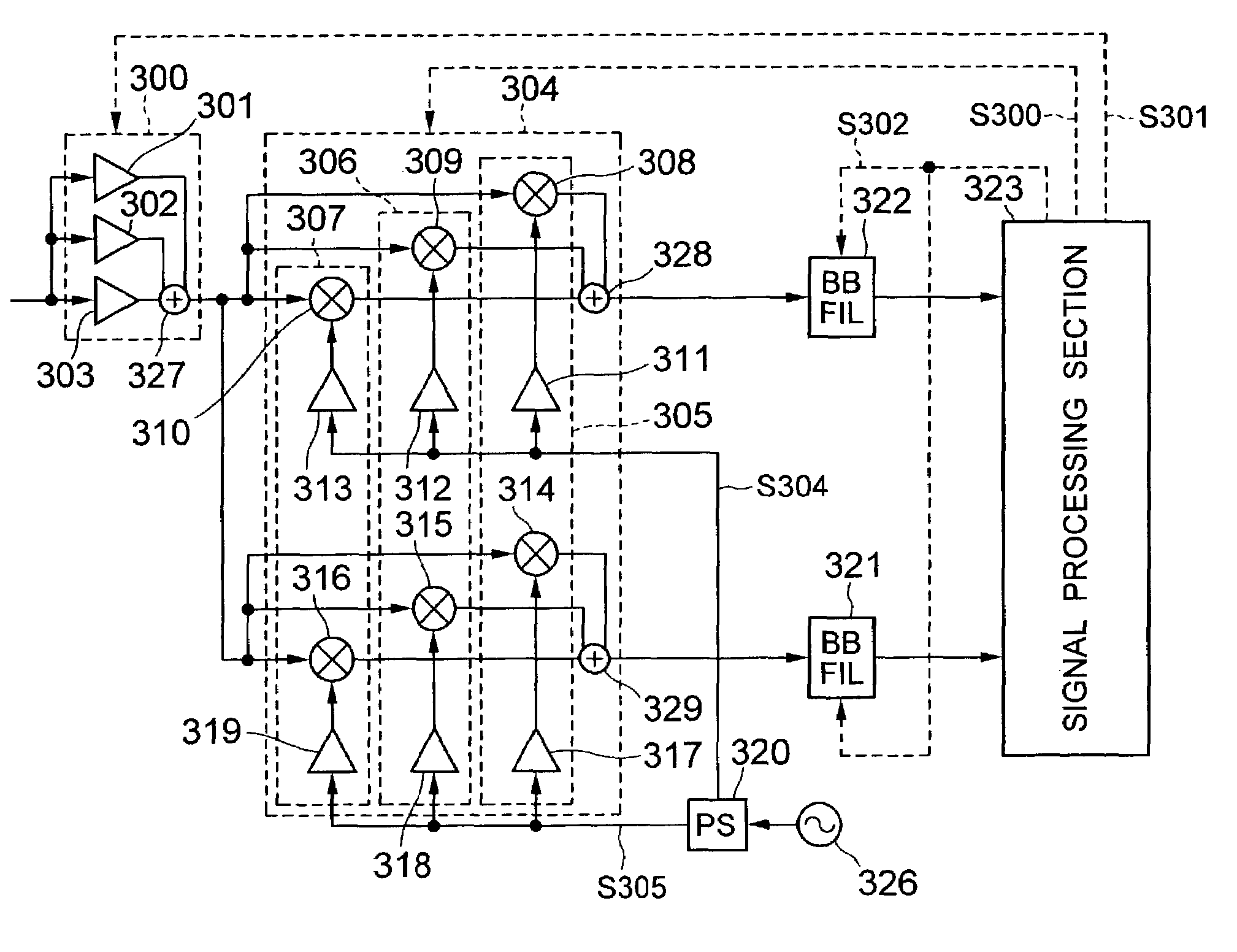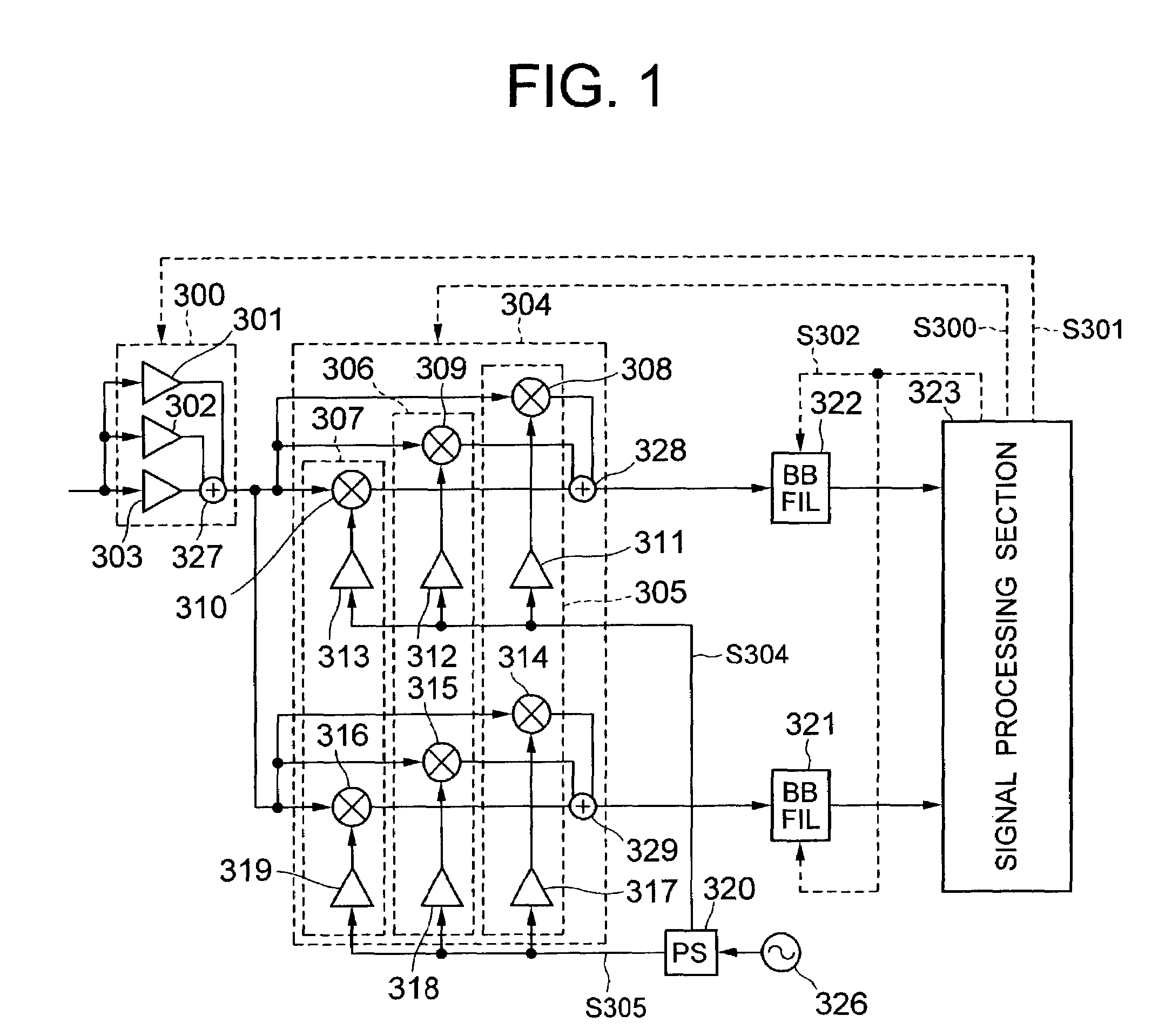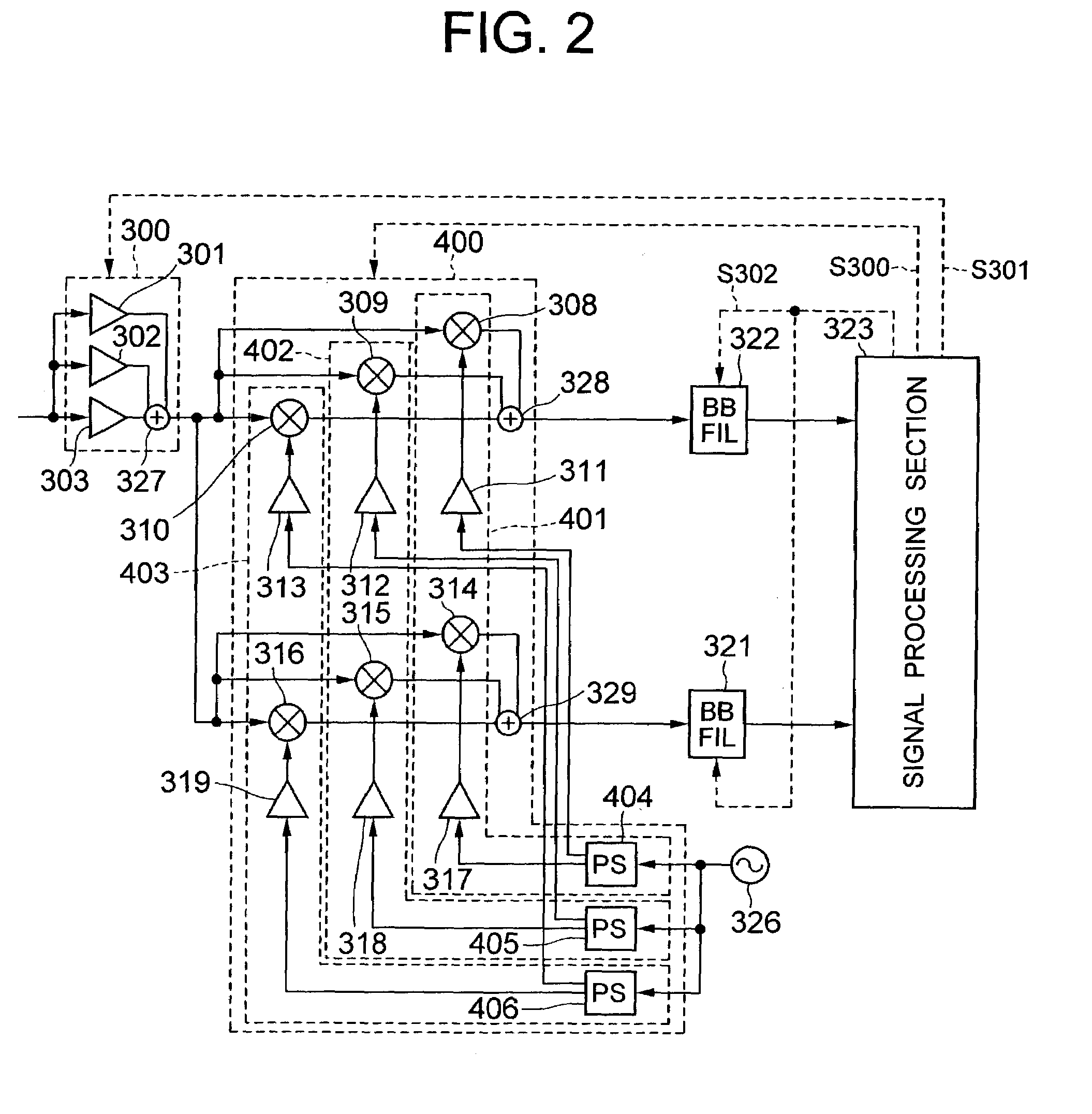Receiver apparatus controlling the power consumption according to the reception signal level
a technology of receiving apparatus and power consumption, applied in the field of receiving apparatus, can solve the problems of large power consumption, achieve the effect of reducing the power consumption of the receiving section, and reducing the demodulation quality
- Summary
- Abstract
- Description
- Claims
- Application Information
AI Technical Summary
Benefits of technology
Problems solved by technology
Method used
Image
Examples
first embodiment
[0045]FIG. 1 is a block diagram showing a constitution of a low power consumption receiver section in the present invention.
[0046]The receiver section shown in FIG. 1 is a receiver section of the direct conversion system, and includes a low noise amplifying stage 300 for giving a desired gain to a high frequency signal which is received, a frequency converting stage 304 for frequency converting an output signal of the low noise amplifying stage 300 to a base band signal, base band filters (BB FIL) 321 and 322 for selecting a signal of a desired frequency and giving a gain, a local oscillator 326, a phase shifter (PS) 320 for converting an output signal of the local oscillator 326 to signals having phases shifted by 90 degrees from each other, and supplying to the frequency converting stage 304, and a signal processing section 323. The gain of a variable gain amplifier included in each of the base band filters (BB FILs) 321 and 322 is controlled by a control signal S302 from the sign...
fifth embodiment
[0077]FIG. 5 is a block diagram showing a constitution of a low power consumption receiver section in the present invention.
[0078]The receiver section shown in FIG. 5 is a receiver section of the digital-IF system, and includes: a low noise amplifying stage 300 for giving a desired gain to a received high frequency signal, a banspass filter (BPF) 500 for suppressing an undesired signal from an output signal of the low noise amplifier 300, a frequency converting stage 612 for converting a frequency of an output signal of the bandpass filter 500 to a fourth intermediate frequency, a bandpass filter (BPF) 615 for suppressing an undesired signal from an output signal of the frequency converting stage 612, a variable gain amplifier 700 for giving a desired gain to an output signal of the BPF 615, a local oscillator 614 for supplying a local oscillating signal (local signal) to the frequency converting stage 612, and a signal processing section 323. In this respect, constituent elements o...
sixth embodiment
[0083]FIG. 6 is a block diagram showing a constitution of a low power consumption receiver section in the present invention.
[0084]The receiver section shown in FIG. 6 is a receiver section of the image rejection system, and includes: a low noise amplifying stage 300 for giving a desired gain to a received high frequency signal, a frequency converting stage 820 for converting a frequency of an output signal of the low noise amplifying stage 300 to a fifth intermediate frequency, phase shifters 822 and 823 for converting phases of output signals S801 and S802 of the frequency converting stage 820, an adder 824 for adding output signals of the phase shifters 822 and 823, a bandpass filter 615 (BPF) 615 for passing only a signal of a desired frequency of an output signal of the adder 824, and for suppressing an undesired undesired signal, a demodulator (DEM) 532 for frequency converting an output signal of the BPF 615 to a base band signal, a local oscillator 821 for supplying a local s...
PUM
 Login to View More
Login to View More Abstract
Description
Claims
Application Information
 Login to View More
Login to View More - R&D
- Intellectual Property
- Life Sciences
- Materials
- Tech Scout
- Unparalleled Data Quality
- Higher Quality Content
- 60% Fewer Hallucinations
Browse by: Latest US Patents, China's latest patents, Technical Efficacy Thesaurus, Application Domain, Technology Topic, Popular Technical Reports.
© 2025 PatSnap. All rights reserved.Legal|Privacy policy|Modern Slavery Act Transparency Statement|Sitemap|About US| Contact US: help@patsnap.com



